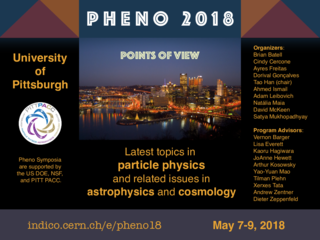Speaker
Description
Macroscopic objects made of baryonic matter with sizable strangeness (i.e. many of the valence
quarks are strange quarks, rather than the usual up and down quarks found in protons and neutrons)
may be stable, and may have formed prior to nucleosynthesis thus evading the principal
constraint on baryonic dark matter. We have analyzed the expected signals that would be produced
from the passage of macroscopic dark matter (macros) through the atmosphere and sedimentary
rock. Fluorescence detectors (FD) such as those of Pierre Auger Observatory and JEM-EUSO
could detect the light produced from the recombination of the resulting plasma in the atmosphere.
This could involve hardware or software changes to the trigger. The tracks of metamorphic rock
(fulgurites) that macros would leave in passing through sedimentary rock could be distinguished
from the surrounding sedimentary rock. We present the regions of parameter space that could be
probed from the expected atmospheric
uorescence and fulgurite tracks.

